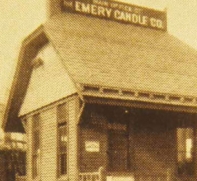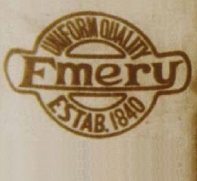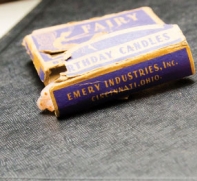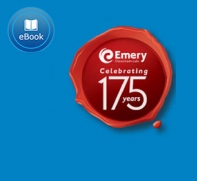Human values & entrepreneurial spirit
The Emery family showed us that true wealth lies in kindness, compassion and generosity.
“It is important to work toward leaving the world a better place. Since we are fortunate, and are able to do something, it is our responsibility to do it.” ~ Jack Emery ~
Thomas J. and John J. Emery

Thomas Emery Sr.’s sons, Thomas J. (1830-1906) and John J. Emery (1835-1908), inherited their father’s business acumen. In 1887, the Emery Candle Company was incorporated, continuing a legacy of growth and innovations in renewable-based chemicals. With Emery Candle Company flourishing, the brothers turned their attention to the Cincinnati real estate market where their contributions – such as the Palace Hotel (Cincinnatian Hotel) and the St. Paul Building - mark the landscape of the city throughout history and even today.
The Emery brothers shared their father’s commitment to the betterment of the Cincinnati community, and their contributions included a Children’s Hospital which did not discriminate patients, a new building for the Orphan Asylum for Colored Children, and significant contributions of money and art pieces to the Cincinnati Art Museum.

Jack Emery, Jr.

John (Jack) Josiah Emery, Jr. (1898-1976) grew up in the East Coast, detached from the family’s business in Cincinnati. After completing his studies at Harvard and Oxford, he came to Cincinnati to settle some business matters in 1924 and found the Emery Candle Company in a dilapidated state. Thus began his more than 50-year involvement in managing the Emery business in Cincinnati, which he went on to grow in leaps and bounds. On the real estate front, Jack continued to initiate many large developments, including the construction of the Carew Tower which provided workers with income during the Great Depression. He was also involved in implementing a Master Plan for the development of the city and its infrastructure.
Jack continued his family’s extensive involvement with the Cincinnati Art Museum, serving as Trustee and President, and a major benefactor. He was also the founding director of the Charter Party, a local independent political party devoted to reforming corrupt governmental practices. During his lifetime, Jack was named a “Great Living Cincinnatian” by the Cincinnati Chamber of Commerce and in 2000, was inducted into the Greater Cincinnati Business Hall of Fame, recognizing his outstanding contributions to business and civic matters.

Mary M. (Hopkins) Emery (1844-1927)

Did you know?
The Cincinnati Zoo was close to being shut down in 1916, but Mary M. Emery’s contribution allowed it to carry on, prosper and to eventually be procured by the City of Cincinnati. Today, the Cincinnati Zoo & Botanical Garden is the second oldest zoo in the United States.
Mary M. (Hopkins) Emery (1844-1927) married Thomas J. Emery in 1866, and the marital union bore two sons. Both children passed away young and Mary poured her heart into philanthropy, especially in causes for children. Mary would come to be known as one of the most generous people in Cincinnati.
She, along with her husband, contributed to the Children’s Hospital, the Orphan Asylum for Colored Children, and the Fresh Air Farm and Society, which was a refuge for indigent women and children. After Thomas J. passed away, she created the “Thomas J. Emery Free Day Endowment” fund which provides free admission to the Cincinnati Art Museum on Saturdays until today. Her donation also helped construct the Ohio Mechanics’ Institute building and its legendary Emery Auditorium.
Of all her great works, her most renowned contribution is likely the creation of Mariemont, a planned community just a few miles east of downtown Cincinnati. The development embraced modern principles and illustrated how people of moderate means could still enjoy city living. Even after her death in 1927, her last will and testament reflected her amazing generosity, as it bequeathed her entire art collection to the Cincinnati Art Museum.


Thomas Emery Sr.
In the early 1830s, Thomas Emery Sr.(1789 -1857 ) left Bedford, England to settle in Cincinnati. His first business foundered during the recession that lasted from 1837 until the mid-1840s. As the financial situation recovered, he started his new business of manufacturing lamp oil from lard in 1840, and the long journey towards becoming the Emery Oleochemicals we know today had begun.
With his fortunes reestablished, Thomas hunted down his old creditors from twenty years earlier, and repaid them in full, with interest. Unfortunately, Thomas fell through an open hatchway in a new manufacturing facility and died on December 30, 1857.








